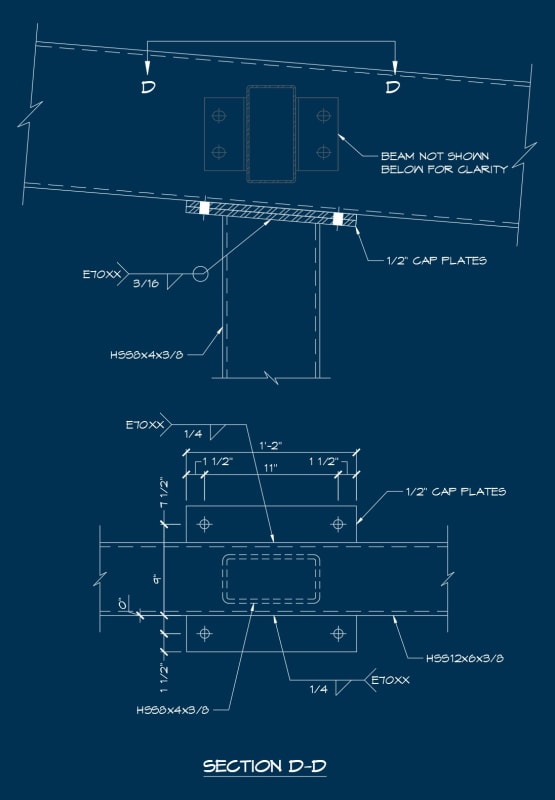Hi All,
I am working on a project where I would like to use the following column to rafter connection on an HSS frame:

Does anyone know of references that address this type of condition? The column side is nothing really unusual, it is more the rafter side of the splice that is a little different. Checking the welds and concentrated flange loads on the rafter should be pretty straightforward. Plate thickness should not be controlled on the rafter side. What else am I missing?
Before you say it I know a direct weld would be better. There is a chance I can talk the owner into that but it will make transport a little tricky.
Look forward to hearing your thoughts. Thanks in advance!
I am working on a project where I would like to use the following column to rafter connection on an HSS frame:

Does anyone know of references that address this type of condition? The column side is nothing really unusual, it is more the rafter side of the splice that is a little different. Checking the welds and concentrated flange loads on the rafter should be pretty straightforward. Plate thickness should not be controlled on the rafter side. What else am I missing?
Before you say it I know a direct weld would be better. There is a chance I can talk the owner into that but it will make transport a little tricky.
Look forward to hearing your thoughts. Thanks in advance!

![[glasses] [glasses] [glasses]](/data/assets/smilies/glasses.gif)